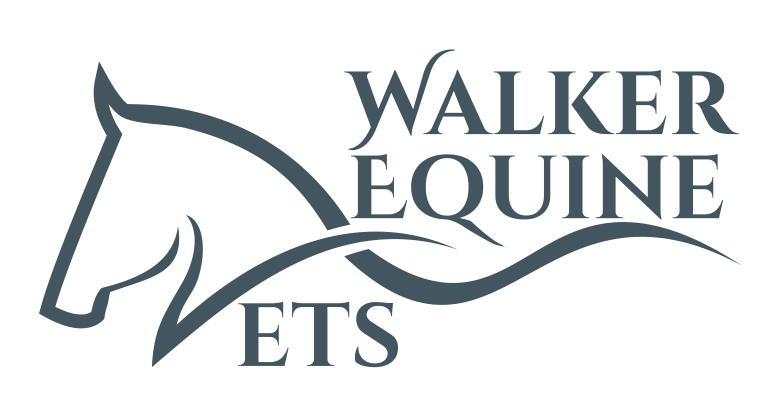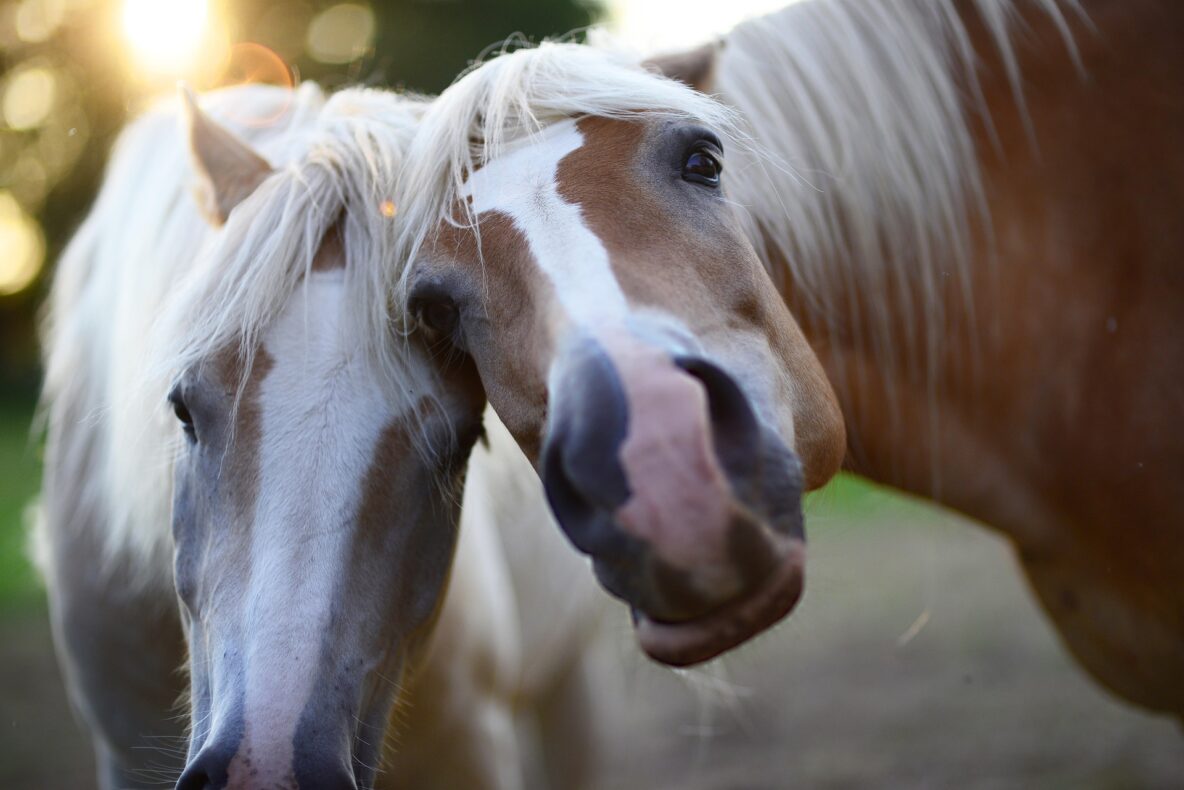What is Colic?
Colic is a broad veterinary term used to describe any form of abdominal pain. Colic can be caused by very many different causes; most of these are gastrointestinal in nature but occasionally colic can be the result of urinary and reproductive problems and even some severe respiratory disease can present as colic. Signs of Colic Knowing and recognising signs of colic is very important for all horse owners as it will allow you to notice even subtle changes in your horse’s behaviour and allow us to attend to your horse as soon as possible. It must be remembered that no two colic episodes are alike and there is much variation in type, nature and severity of colic signs which include:
- Pawing at the ground
- Flank watching
- Kicking or biting at the belly
- Repeated lying down
- Rolling
- Holding head in unusual position
- Repeated curling back of upper lip
- Sweating
- Stretching out as if to urinate
- Dog sitting
- Lying on back
- Depression
- Inappetence
Types of Colic
The vast majority of colics are due to some sort of gastrointestinal problem. The following is a broad classification of some of the more common types of colics.
Idiopathic / Spasmodic This is certainly the most common type of colic and equates to the majority of colics. Spasmodic colic occurs when the bowel is contracting in an abnormal manner creating painful spasms and somewhat of an “over-active” gastrointestinal tract. Spasmodic colics usually respond very well to anti-spasmodic drugs along with other therapeutic treatment. Idiopathic is a veterinary term for “unknown origin”. Despite the best veterinary investigation there are still lots of colics that we are never quite sure about the exact cause of the abdominal pain. The good thing however is that the vast majority of these colics respond medical treatment.
Impactions This term describes when the bowel, usually the large intestine, is blocked by a firm mass of food. This is a fairly common type of colic and can often be easily resolved on farm with administration of fluids and / or liquid paraffin via a stomach tube. Occasionally, larger and more severe impactions may require surgery to correct. Impaction colics often occur when a horse usually kept on shavings or grass is moved to, and eats, a straw bed. Displacements, Strangulations and Torsions Displacements occur when one section of the bowel moves to an abnormal location within the abdomen. Strangulating colics occur when the blood supply to a piece of gut gets cut off.
Torsions occur when the bowel twists on itself cutting off the blood supply. The horse’s gastrointestinal system is unusual (and badly designed!) due to the fact that large sections of the bowel are either suspended in place by loose lengths of tissue such as for the small intestine or completely unattached to the body wall, as is the case for the large intestine. Both of these predispose the horse to displacements and torsions. Strangulations, displacements and torsions are intestinal accidents that are uncommon but are very serious in nature. Some displacements can be treated by starving and medical therapy but severe displacements and all strangulations and torsions require immediate surgery to correct the problem. The early stages of strangulating or displacement colics often present in a very similar manner to the more common, less life-threatening forms of colic – the major reason to take all colic episodes seriously and call the vet at the earliest signs of abdominal pain.
What to tell the vet
Your vet on arrival will probably ask you some of the following questions whilst he or she is observing your horse:
- Any previous episodes of colic? And how did they resolve?
- How old is your horse?
- How long has your horse been colicky for?
- What colic signs has your horse been showing?
- Has your horse passed any faeces?
- When did your horse last eat or drink?
- Any changes in diet or management lately?
- Is your mare pregnant?
- If your mare has recently foaled, how long ago did she foal?
- What is your horse’s worming history?
The Veterinary Colic Exam
The colic examination is a complex evaluation of a multitude of interacting factors with many differing variables. The following is a brief overview of some of the parameters that your veterinarians will assess and some of the procedures they may perform.
Heart Rate: An elevated heart rate is usually a good indicator of pain and can often be an indicator of severity of colic. A normal resting heart rate is around 34-40 beats per minute.
Mucous Membranes and Capillary Refill Time: Your veterinarian will look at the colour and moistness of your horse’s gums and will then asses the ‘capillary refill time’ by pressing on the gums to blanch them and seeing how long it takes for colour to return. Mucous membrane colour, moistness and capillary refill time help to assess your horse’s hydration status and are good indicators of blood perfusion. Normal gums should be salmon pink, moist with a capillary refill time of less than 2 seconds.
Skin Tent: By pinching up a section of skin and seeing how quickly it returns to normal can help ascertain if your horse is dehydrated. Hydration is closely related to skin elasticity; however, the skin tent is not always very reliable and your vet will use your horses gum characteristics in association with the skin tent and other things like sunken eyes to fully gauge hydration status.
Gut Sounds: By listening to the gut sounds through a stethoscope your veterinarian can get a good indication of how much activity is occurring inside the abdomen. Your vet will usually listen to the upper left, lower left, upper right and lower right sections of the abdomen and determine what sort of gut sounds are present. Gut sounds are broadly grouped into 4 categories; increased, normal, decreased and absent.
Rectal Examination: The rectal exam is a vital part of the colic diagnostic process as it allows the veterinarian to feel what is occurring inside the abdomen. Most horses will require sedation to perform this examination if stocks are not available. The vet will be able to assess if there are any major abnormalities present such as an impaction or if there is a distended loop of bowel due to a twist, but as you can imagine your vet’s arm only reaches so far forward and can only feel so much.
Passing a Nasogastric (Stomach) Tube: Passing a tube up your horse’s nose and down into its stomach is both diagnostic and therapeutic. Your vet is first of all looking for what is termed “gastric reflux”. Gastric reflux occurs when there is a blockage in the bowel (usually the small intestine) that causes the build up of fluid in front of it. Unlike other species the horse can’t vomit and the stomach can rupture due to build up of fluid. The presence of gastric reflux is often a major indicator for surgery. If gastric reflux is not present, your vet may decide to administer some fluids down the tube to help treat your horse’s colic.
Abdominocentesis: Commonly known as a “belly tap”, abdominocentesis is a procedure that involves placing a needle into the abdomen to see if there is any free fluid in the abdomen. If obtained, analysis of this fluid can indicate the health of the bowel to your veterinarian.
Treatment
After assessing all the different factors involved in your horse’s colic, your vet will decide on the appropriate course of treatment. This may include administration of fluids/electrolytes down a nasogastric tube plus or minus some form of a laxative if an impaction is suspected.
Pain relief is one of the corner stones of colic therapy and your vet will decide what drug and how much is appropriate. Once pain relieving drugs are given, we want to see a good response and the disappearance of all colic signs. If colic signs recur, it is vital that you contact your veterinarian as a horse that is still painful despite pain relieving drugs may need to be referred to a hospital for further investigation and possible surgery.
Colic Surgery
One of the main things that a first opinion veterinarian treating colic in the field needs to determine is whether the horse can be managed medically or does it require surgery. There are many different indications for surgery and your veterinarian will assess them during the colic investigation. It must be remembered that the vast majority of colic do not require surgery and respond well to treatment but if your vet does feel that your horse needs surgery, or at least requires further investigation at a referral hospital, time is of the essence.
The decision to take your horse to surgery can often be very difficult and unfortunately, due to the nature of colic, a rapid decision is required.
Many factors are involved in making this decision such as severity of the problem, likelihood of a success, expense etc but your veterinarian is well trained and will be able to help you make the right decision for the horse.
Is Colic My Fault?
A very common question owners will ask but the answer is almost always no! You must remember that horses are predisposed to colic because of their unusual gastrointestinal anatomy and the particular way their gut works. Avoiding rapid diet and management changes and practising good preventative health programmes are sensible but even the best kept, and most well managed horse can get colic.
Colic Myth:
Stopping your horse from rolling will stop the bowel from twisting. This is highly unlikely – happy healthy horses roll in the field and their bowel doesn’t twist. Walking your horse can however help distract from the pain and more importantly prevent them from self traumatising. You must remember however not to walk your horse to exhaustion and to stop for a few minutes every so often to monitor for colic behaviour in your horse.

